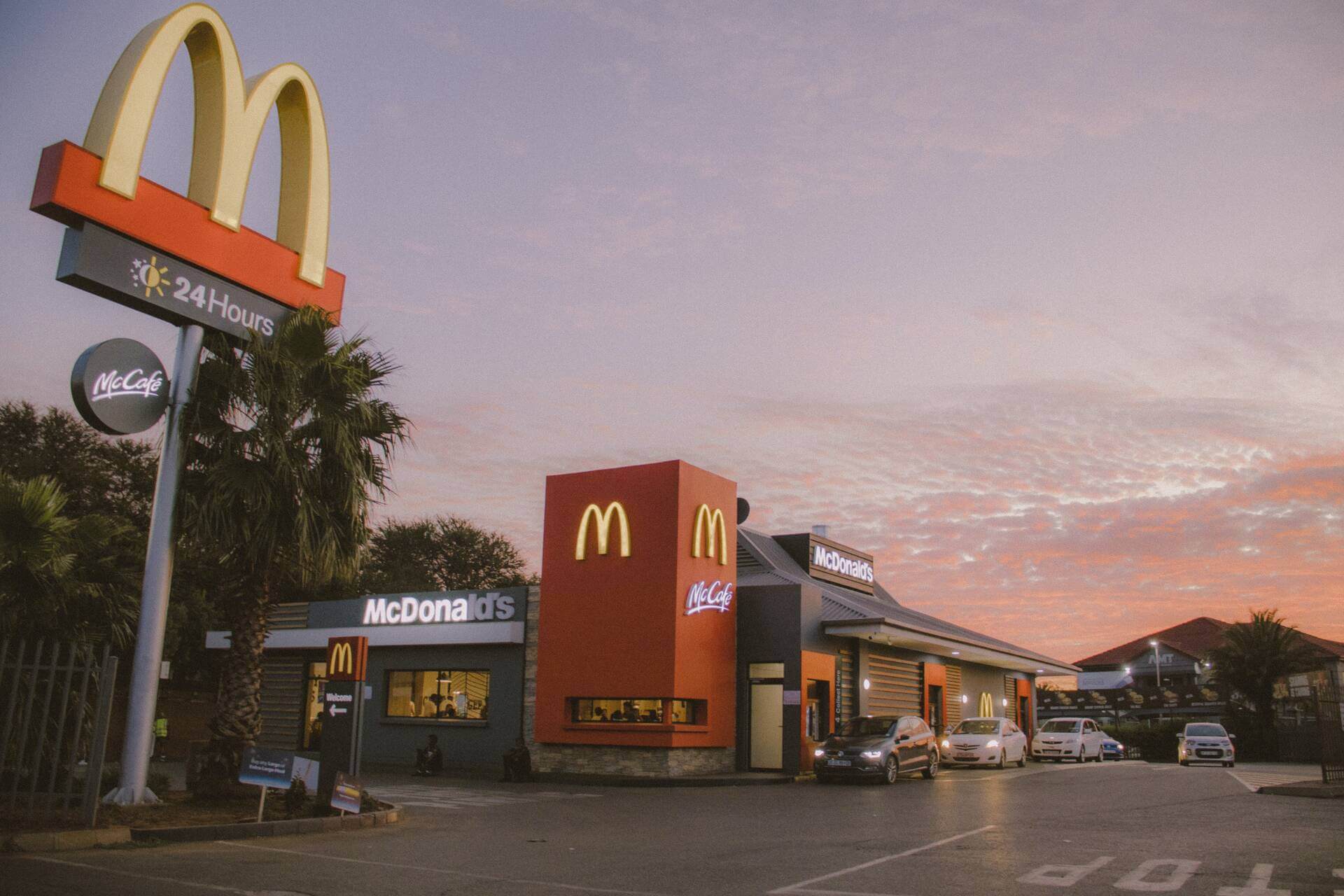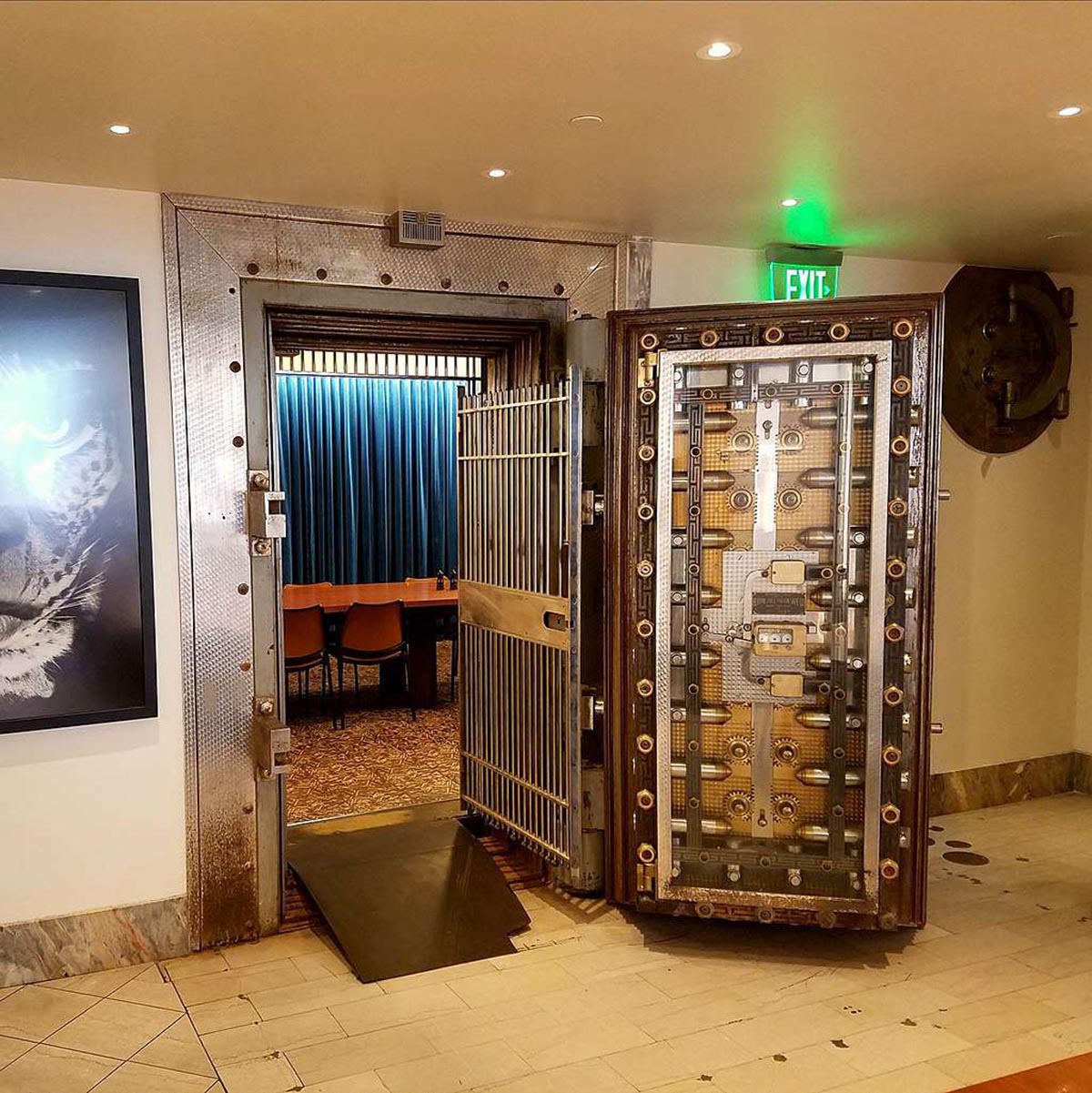Home>Finance>Why Would McDonald’s Use Two Joint Ventures To Operate Restaurants In Different Regions Of India?


Finance
Why Would McDonald’s Use Two Joint Ventures To Operate Restaurants In Different Regions Of India?
Modified: January 15, 2024
McDonald's utilizes two joint ventures in separate regions of India as a strategic financial move for operating their restaurants, maximizing their presence in the country's diverse market.
(Many of the links in this article redirect to a specific reviewed product. Your purchase of these products through affiliate links helps to generate commission for LiveWell, at no extra cost. Learn more)
Table of Contents
- Introduction
- Joint Venture 1: Partnership with Connaught Plaza Restaurants (North and East India)
- Joint Venture 2: Partnership with Hardcastle Restaurants (West and South India)
- Reasons for McDonald’s Use of Two Joint Ventures in India
- Expansion Strategy and Market Penetration
- Local Expertise and Cultural Understanding
- Risk Sharing and Cost Management
- Conclusion
Introduction
Welcome to the world of McDonald’s, the globally recognized fast-food chain that has successfully captured the hearts and taste buds of millions. With its iconic golden arches and signature menu items, McDonald’s has established itself as a leader in the fast-food industry. However, when it comes to operating restaurants in different regions of India, McDonald’s has taken a unique approach – the use of two joint ventures.
Joint ventures are strategic partnerships between two or more companies that come together to pursue a specific business opportunity. In the case of McDonald’s, they have chosen to collaborate with two separate entities to operate their restaurants in different regions of India. In the northern and eastern parts of the country, McDonald’s has partnered with Connaught Plaza Restaurants (CPRL), while in the western and southern regions, they have joined forces with Hardcastle Restaurants.
This article will delve into why McDonald’s has adopted this dual joint venture strategy in India, exploring the various reasons behind their decision. By understanding their approach, we can gain valuable insights into the dynamics of the Indian market and the strategies adopted by multinational corporations to navigate its unique challenges.
Joint Venture 1: Partnership with Connaught Plaza Restaurants (North and East India)
In 1995, McDonald’s entered into a joint venture with Connaught Plaza Restaurants Pvt. Ltd. (CPRL) to operate its outlets in the northern and eastern regions of India. CPRL is a conglomerate led by Vikram Bakshi, a businessman with considerable experience in the food and beverage industry. This joint venture allowed McDonald’s to gain a foothold in these crucial markets and tap into the vast consumer base of these regions.
Under the partnership with CPRL, McDonald’s expanded its presence in cities like Delhi, Kolkata, and Chandigarh. The joint venture has been responsible for the growth and development of over 160 McDonald’s restaurants, making it one of the largest food service companies in these regions.
One of the key advantages of partnering with CPRL is their local expertise and understanding of the diverse consumer preferences in northern and eastern India. CPRL has deep-rooted knowledge of the local culture, allowing them to adapt McDonald’s menu to suit the taste preferences and dietary habits of the regional customers.
By working closely with CPRL, McDonald’s has been able to introduce localized food specials, offering items like the McPaneer Tikka (a vegetarian paneer tikka burger), or the McAloo Tikki (a potato and pea patty burger). These region-specific menu items cater to the Indian palate and have proved to be popular among customers.
Moreover, CPRL’s understanding of the local market dynamics and supply chain networks has been instrumental in efficiently managing operations and ensuring timely delivery of products to McDonald’s restaurants. This has played a crucial role in maintaining the quality and consistency of the food served at these outlets.
The partnership with CPRL has not been without its challenges. In recent years, there have been disagreements and legal disputes between McDonald’s and CPRL, resulting in temporary closures of certain outlets. However, both parties have shown a commitment to resolving their differences and finding common ground to continue their collaboration.
Overall, the joint venture with CPRL has enabled McDonald’s to establish a strong presence in the northern and eastern regions of India, captivating the local consumer base through localized menu offerings and leveraging CPRL’s expertise in managing operations in these areas.
Joint Venture 2: Partnership with Hardcastle Restaurants (West and South India)
In parallel with its partnership with Connaught Plaza Restaurants in the northern and eastern regions of India, McDonald’s also joined forces with Hardcastle Restaurants Pvt. Ltd. to operate its outlets in the western and southern parts of the country. This joint venture serves as McDonald’s gateway to major cities like Mumbai, Bengaluru, and Hyderabad, among others.
Hardcastle Restaurants, led by Amit Jatia, is a well-established player in the Indian food service industry. Through this partnership, McDonald’s has been able to leverage Hardcastle Restaurants’ local insights and expertise to cater to the unique preferences of customers in the western and southern regions of India.
Since its inception, the McDonald’s-Hardcastle joint venture has focused on rapid expansion, opening numerous outlets in key urban centers. This strategy has allowed McDonald’s to capture the attention and loyalty of local consumers, creating a solid presence and establishing the brand as a favorite fast-food choice in these regions.
One of the notable aspects of the partnership with Hardcastle Restaurants is their emphasis on innovation and customization to meet local tastes and preferences. Recognizing the culinary diversity and regional variations in food choices, McDonald’s has tailored its menu offerings to include region-specific items like the Maharaja Mac (a burger made with chicken or mutton), Masala Grill Veg (a spiced vegetable burger), and the McAloo Tikki Wrap (a rolled version of the popular burger).
Furthermore, Hardcastle Restaurants has played an instrumental role in developing a robust supply chain network, ensuring the seamless flow of ingredients and products to McDonald’s outlets. This focus on efficiency and logistics has helped McDonald’s maintain the quality and freshness of its offerings, ensuring a consistent dining experience for customers.
Like any business venture, the McDonald’s-Hardcastle partnership has faced its share of challenges. These challenges have included adaptations to local regulations, market fluctuations, and the need to strike a balance between standardization and customization.
However, the joint venture has displayed resilience in the face of these obstacles, with both companies working together to overcome the hurdles and drive continued growth of the McDonald’s brand in the western and southern regions of India.
Overall, the partnership with Hardcastle Restaurants has been instrumental in strengthening McDonald’s position in the western and southern parts of India, blending global expertise with local insights to provide a delightful dining experience for customers in these regions.
Reasons for McDonald’s Use of Two Joint Ventures in India
The decision of McDonald’s to utilize two separate joint ventures in India, one with Connaught Plaza Restaurants (CPRL) and the other with Hardcastle Restaurants, can be attributed to several strategic reasons. This approach has allowed McDonald’s to effectively navigate the unique complexities and diversity of the Indian market while capitalizing on the strengths and expertise of its local partners.
1. Expansion Strategy and Market Penetration
India is a vast and diverse country with different regional preferences and consumer behaviors. By forming joint ventures in multiple regions, McDonald’s has been able to implement a targeted expansion strategy, leveraging the local knowledge and existing infrastructure of its partners to establish a strong foothold in each region.
With the partnership with CPRL focusing on the northern and eastern regions, and the collaboration with Hardcastle Restaurants targeting the western and southern markets, McDonald’s has been able to penetrate key areas and tap into the vast consumer base of these regions.
2. Local Expertise and Cultural Understanding
Operating in a culturally diverse country like India requires a deep understanding of local traditions, tastes, and preferences. By partnering with CPRL and Hardcastle Restaurants, McDonald’s gains access to their invaluable local expertise and cultural insight.
These joint ventures allow McDonald’s to adapt its menu and offerings to suit regional tastes, incorporating local flavors and food choices that resonate with Indian consumers. This localization approach has been instrumental in winning over customers and creating a more personalized dining experience.
3. Risk Sharing and Cost Management
Engaging in joint ventures enables McDonald’s to share risks and costs associated with establishing and operating restaurants in different regions of India. By partnering with existing players in the Indian food service industry, McDonald’s can leverage their knowledge and resources, reducing the burden of investment and operational expenses.
Sharing risks and costs also provides McDonald’s with greater flexibility in adapting to market fluctuations and navigating regulatory challenges. It allows them to allocate resources efficiently and prioritize growth opportunities in each region.
4. Cultural Sensitivity and Local Partnerships
McDonald’s recognizes the importance of building strong relationships and partnerships with local stakeholders. Through the joint ventures with CPRL and Hardcastle Restaurants, McDonald’s demonstrates its commitment to fostering a sense of trust and collaboration with Indian partners.
These partnerships not only help McDonald’s in navigating the complexities of the Indian market but also contribute to the company’s image as a responsible corporate citizen. By supporting local businesses and engaging in meaningful collaborations, McDonald’s strengthens its brand reputation and creates a positive impact in the communities it serves.
Overall, the decision to employ two joint ventures in India has proven to be a strategic move for McDonald’s. It has allowed the company to expand its presence, adapt to local tastes, mitigate risks, and foster strong relationships with local partners. By leveraging the strengths and expertise of its joint venture partners, McDonald’s continues to thrive in the dynamic and competitive Indian market.
Expansion Strategy and Market Penetration
One of the key reasons behind McDonald’s use of two joint ventures in India is its strategic expansion strategy and the desire to penetrate different regional markets effectively. India is a vast country with diverse consumer preferences and cultural nuances, and a one-size-fits-all approach wouldn’t be sufficient to capture the market’s full potential.
By forming joint ventures with Connaught Plaza Restaurants (CPRL) in the northern and eastern regions, and with Hardcastle Restaurants in the western and southern parts of India, McDonald’s gains access to local partners who possess deep knowledge and understanding of their respective regions. This localized approach allows McDonald’s to tailor its offerings to meet the specific demands of each market, thereby enhancing its market penetration and consumer appeal.
This expansion strategy encompasses opening new outlets in key cities and towns within each region. McDonald’s has focused on establishing a strong presence in urban centers where consumer demand for international fast food has been growing steadily. By strategically locating their restaurants, they ensure maximum visibility and accessibility to their target customers.
Furthermore, the joint ventures enable McDonald’s to leverage the existing infrastructure and expertise of their partners. This not only expedites the process of establishing new restaurants but also ensures efficient supply chain management, allowing for consistent delivery of quality products to customers. This has been critical in catering to the high demand for McDonald’s offerings while maintaining customer satisfaction.
As part of its expansion strategy, McDonald’s has also placed emphasis on adapting its menu to suit the regional tastes and preferences of Indian consumers. While maintaining its core menu items familiar to global customers, McDonald’s has introduced localized variations to cater to the diverse Indian palate. This includes vegetarian options, such as the McVeggie burger and the McAloo Tikki, which have gained immense popularity.
By tailoring their offerings to suit local preferences, McDonald’s has been successful in appealing to a wider range of customers across different regions. This strategy has been instrumental in attracting both Indian customers who are looking for international fast food options and those seeking menu items that align with their cultural and dietary preferences.
Overall, McDonald’s expansion strategy and market penetration in India have been significantly enhanced through the use of two joint ventures. This approach allows for a targeted and tailored approach to each region, leveraging local knowledge, infrastructure, and consumer insights to ensure successful market entry and growth. By understanding the unique dynamics of the Indian market and adapting its business strategies accordingly, McDonald’s has positioned itself as one of the leading players in the fast-food industry in India.
Local Expertise and Cultural Understanding
One of the key advantages of McDonald’s use of two joint ventures in India is the access to local expertise and cultural understanding provided by their partners. Connaught Plaza Restaurants (CPRL) and Hardcastle Restaurants play a crucial role in helping McDonald’s navigate the diverse nuances and preferences of the Indian market.
India is a country with a rich tapestry of cultures, languages, and culinary traditions. By partnering with local entities, McDonald’s gains insights into the intricacies of regional tastes, dietary habits, and cultural preferences. This understanding is essential for successfully tailoring McDonald’s offerings and creating a menu that appeals to the diverse Indian consumer base.
CPRL and Hardcastle Restaurants possess extensive knowledge of their respective regions and have been instrumental in translating this knowledge into successful business strategies. Their deep-rooted understanding of the local market dynamics enables McDonald’s to adapt its menu to include region-specific items that resonate with Indian customers.
Through collaborations with local suppliers, the joint ventures ensure access to fresh and locally sourced ingredients. This enables McDonald’s to maintain the quality and authenticity of its offerings, aligning with consumer expectations of freshly prepared, high-quality food.
Moreover, the localized menus created in collaboration with CPRL and Hardcastle Restaurants go beyond just incorporating regional flavors.; They also take into account cultural sensitivities, dietary restrictions, and vegetarian preferences prevalent in different parts of the country.
For instance, India has a significant vegetarian population and a culture deeply rooted in vegetarianism. McDonald’s recognized this and introduced an extensive vegetarian menu in collaboration with its Indian partners. This menu includes popular items like the McAloo Tikki burger and the McVeggie burger, which cater specifically to vegetarian consumers.
By working closely with CPRL and Hardcastle Restaurants, McDonald’s is able to adapt and innovate its offerings in a way that resonates with the local population, ensuring a delightful dining experience for customers and driving brand loyalty.
This emphasis on cultural understanding also extends to the dining experience itself. McDonald’s has tailored its restaurants to cater to Indian customs and preferences. This includes providing separate sections for vegetarian and non-vegetarian food preparation, ensuring adherence to cultural and religious practices.
Overall, the local expertise and cultural understanding brought by the joint venture partners have been instrumental in McDonald’s success in India. This collaborative approach has allowed the company to create a strong connection with Indian consumers by tailoring its offerings to their tastes and preferences, while demonstrating cultural sensitivity and respect.
Risk Sharing and Cost Management
McDonald’s decision to utilize two joint ventures in India, one with Connaught Plaza Restaurants (CPRL) and the other with Hardcastle Restaurants, is driven by the benefits of risk sharing and cost management. Operating in a diverse and competitive market like India comes with its fair share of challenges, and forming joint ventures allows McDonald’s to navigate these challenges more effectively.
Firstly, by partnering with established players in the Indian food service industry, McDonald’s is able to spread the risks associated with operating in a new market. Operating costs and financial burdens are shared between McDonald’s and its joint venture partners, which reduces the strain on McDonald’s alone.
Shared risks and costs give McDonald’s the flexibility to allocate resources more efficiently and make smart investment decisions. This allows them to adapt to market fluctuations, regulatory changes, and varying consumer demands without bearing the full financial burden themselves.
Furthermore, the joint ventures help in mitigating operational risks. McDonald’s can rely on the local expertise and on-the-ground experience of its partners to navigate complex supply chain logistics, understand and comply with local regulations, and manage day-to-day operational challenges.
In India, where the business landscape varies considerably from region to region, having local partners who understand the regulatory landscape and local market dynamics is invaluable. It allows McDonald’s to streamline its operations, ensure compliance with local laws, and minimize any potential disruptions.
Another advantage of the joint ventures is the shared cost management. By collaborating with local partners, McDonald’s can leverage their existing infrastructure, supplier networks, and distribution channels. This reduces the need for significant upfront investments in establishing a supply chain and distribution network from scratch.
The joint ventures also enable McDonald’s to benefit from economies of scale. By pooling resources and sharing costs, McDonald’s can negotiate better terms with suppliers, achieve bulk purchasing efficiencies, and drive down overall operational costs.
Cost management is particularly crucial in a price-sensitive market like India. By effectively managing costs, McDonald’s can offer competitive pricing to its customers, making its products more accessible and appealing to a broader consumer base.
Overall, the use of two joint ventures in India provides McDonald’s with a strategic advantage in terms of risk sharing and cost management. By partnering with local entities, McDonald’s is able to mitigate risks, navigate operational challenges, and effectively manage costs. This allows the company to focus on its core competencies and achieve sustainable growth in the dynamic and competitive Indian market.
Conclusion
The utilization of two joint ventures, one with Connaught Plaza Restaurants (CPRL) and the other with Hardcastle Restaurants, has proven to be a strategic move by McDonald’s to successfully operate its restaurants in different regions of India.
Through the partnership with CPRL, McDonald’s has been able to establish a strong presence in the northern and eastern regions of India, leveraging their local expertise, deep cultural understanding, and operational excellence to cater to the unique preferences of customers in these areas.
Similarly, the joint venture with Hardcastle Restaurants has allowed McDonald’s to create a solid footprint in the western and southern regions, leveraging their market insights, infrastructure, and localized menu offerings tailored to the preferences of customers in these areas.
The use of joint ventures in India offers McDonald’s several advantages, including expansion strategy and market penetration by targeting specific regions, leveraging local expertise and cultural understanding to adapt offerings to local tastes, sharing risks and managing costs through collaboration, and enhancing cost management through shared infrastructure and economies of scale.
By partnering with local entities, McDonald’s demonstrates its commitment to building relationships and understanding the intricacies of the diverse Indian market. This approach fosters trust and collaboration, strengthens the brand’s reputation, and supports the local economy by partnering with local businesses.
In conclusion, the use of two joint ventures has been a strategic move by McDonald’s to capture the vast potential of the Indian market. It allows them to navigate the diverse cultural and regional nuances, cater to local preferences, mitigate risks, manage costs, and establish a strong and sustainable presence in different parts of the country. Through these partnerships, McDonald’s continues to delight customers with its iconic menu while respecting and embracing the flavors and traditions of India.














